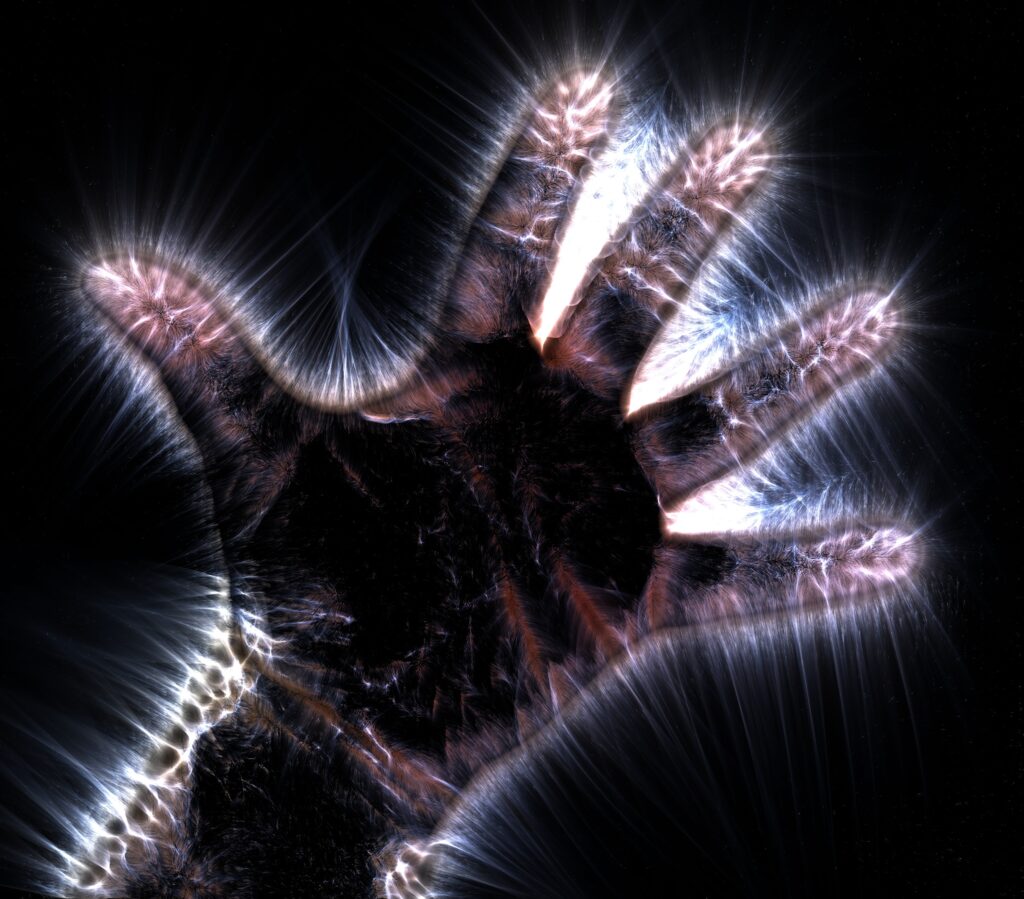The world in mind: Transcendental idealism in Husserl and Kant
Reading | Ontology
![]() dr. Corijn van Mazijk | 2022-06-12
dr. Corijn van Mazijk | 2022-06-12

Although the philosophies of Kant and Husserl are not logically inconsistent with a hypothetical world outside mind, both deny that there is any meaning or significance to such a theoretical abstraction. Therefore, both Kant and Husserl were true idealists, argues dr. van Mazijk. Current thinking in academic philosophy may now be mature enough for a more objective reassessment of the value of the work of those philosophers.
Consciousness and intentionality
Few concepts have proven as hard to define as ‘consciousness.’ In the past, numerous important philosophers – especially in Germany – have made this concept central to their thinking, but often for widely diverging ends, and without the clearest of definitions. Naturally, these great thinkers wrote in their own language, and translating their texts sets additional challenges. For instance, the German Erfahrung used by Kant can translate to ‘experience,’ but so can Erlebnis (more literally ‘living through’). Kant and others also used terms such as Einheit der Apperzeption (‘unity of apperception’) and Ich (‘I’) to refer to (a unity of) consciousness. Hegel and others frequently spoke of Geist (usually translated to ‘mind’ or ‘spirit’), whereas some phenomenologists spoke of Subjektivität (‘subjectivity’), Seele (‘soul’), the Latin Ego and the Greek Psyche, besides the more commonplace Bewuβtsein (‘consciousness’) and variations thereof (‘absolute,’ ‘transcendental,’ ‘pure,’ and ‘empirical’ consciousness). All these terms can shift meaning as one goes from one author to the next, or even within single texts.
In the late 19th century, one particularly fascinating intellectual movement came to prominence that sought to study consciousness in a more scientific manner, and thereby to break with what was seen as a long tradition of mythical reflection. Their approach was first outlined by the German-Austrian thinker Franz Brentano (1838-1917), well-known today for his Psychology from an Empirical Standpoint (1874). According to Brentano, consciousness (and only consciousness, in contrast to non-conscious things) is characterized by what is called ‘intentionality’: the capacity to be ‘about’ or ‘directed at’ something. For instance, when I see a chair, my consciousness is said to be about or directed at that chair. I might also imagine, think about, desire, or otherwise value that same chair instead. Consciousness can thus have ‘aboutness’ (or directedness at an object) in very different ways.
The idea of approaching consciousness in terms of intentionality really caught on around the turn of the 20th century. In the final books of Logical Investigations (1900-1901), Edmund Husserl, then a former student of Brentano, embarked on a kind of proto-phenomenological task called ‘descriptive psychology.’ The descriptive psychologist would assess consciousness not by observing external behavior (as in behaviorism) or through experiment (experimental psychology), but by describing one’s own conscious experiences just as they are lived through. It was, therefore, a descriptive science of the first-person viewpoint.
Many of the phenomenologists in the early 20th century—of which there were more than a handful—were keen to keep the subject matter of this new descriptive psychology or phenomenology and that of the sciences of worldly objects distinct. For instance, as a descriptive psychologist, I might study the intentionality which enables me to relate to a physical object, or to value that object. However, that object itself does not belong to the analysis of the intentional experiences (Erlebnisse). Early phenomenologists usually preferred to stay silent on questions concerning the being of the external objects, which consciousness is directed at, and considered themselves realists partially for that reason.
Transcendental idealism
To the dismay of some of his colleagues and students, Husserl later came to reject this very picture, as he demanded a more fundamental clarity on the relation between consciousness and external world. At some point in the early 20th century, Husserl was allegedly struck by an insight into the “a priori correlation”: the idea that any object somehow presupposes consciousness as a condition of its being given. Put simply, the world requires consciousness in order to appear at all. This is essentially an old idea, called idealism, and some form of it can be found in the writings of a number of earlier philosophers, including Berkeley, Kant and Schopenhauer.
It may well seem as if this talk of consciousness as a condition pertains, trivially indeed, to the ‘appearing’ of the world only. After all, appearing by its very nature involves consciousness in some broad sense, as any appearing is an ‘appearing to.’ The case then seems easily made that the world does not just appear: it also exists on its own terms. While the world appears to me, I also know that it will continue to exist when I’m long gone. Therefore, although its appearance depends in whatever ways on consciousness, its being does not.
But the mature Husserl came to believe that this is a fundamentally wrong way of looking at things. After all, whatever I know about the world in its own right still undeniably derives validity from my experiencing. For instance, I see a chair that I know existed before I was born; I believe that dinosaurs roamed the planet millions of years ago, and so on. The ‘being’ of the chair and of the dinosaurs clearly precede my own being—but this is still undeniably something I experience, a way for things to appear to me. We thus cannot simply take ‘being’ out of the picture of the study of consciousness and its relation to the world. If we would do so, we would thereby split the world into sense (appearance) and being (reality)—precisely the Cartesian view that Husserl (in spite of his association with Descartes for other reasons) everywhere opposes. Instead, according to Husserl, we must be consistent and grant that “every imaginable sense, every imaginable being” is anchored in consciousness (Husserl 1960, 84). True being and consciousness “essentially belong together” (Husserl 1960, 84).
Generations of Husserl readers have somehow found this idealism hard to digest. Moreover, they find it difficult to make it compatible with Husserl’s continuing insistence that scientific claims about external objects are distinct from phenomenological claims about appearances. Perhaps this means, or so they seem to hope, that external objects are distinct from appearances after all. This could again free us from what they believe is an otherwise suffocating idealism, which knows of nothing but appearances.
Failure to understand the compatibility of these two claims within an idealist framework has been the cause of an embarrassingly longstanding dispute in Husserl scholarship (the so-called “noema debate”). The solution to this debate is quite straightforward. Simply put, Husserl argues that there is one universe of being, which can be studied from two opposing perspectives or modes of experience. Only one of these modes reveals the world for what it truly is. In the first mode of experiencing, the natural-naïve mode, I take the things that appear as real, mind-independent objects. In the second mode of experiencing—the phenomenological one—the same real things appear, only now I relate to them exclusively as pure-appearance-of-real-things-for-me.
The crux is that the same universe of being that was disclosed in the natural-naïve mode is now seen for what it secretly was all along: ‘my’ universe of being; in other words, pure appearance. The first—naïve—perspective, therefore, does not yield any different objects; it also deals with appearances, only this goes unnoticed, as “I am completely given over to the object-poles, completely bound by interests … directed toward them” (Husserl 1970, 205). In a way, then, the naïve mode also deals with “absolute being,” which is “always functioning ultimately” (Husserl 1970, 153), but here in “hidden anonymity” (Husserl 1970, 205). Only in the second mode do I engage with absolute being qua absolute being (which Husserl simply calls “absolute being,” hence the confusion that it is a different entity).
Husserl thus essentially presents us with a variation of an old story told by Plato, the well-known cave allegory. We exit the cave by becoming phenomenologists, by turning our attention to the only true world, which is (contra Plato, of course) the world as pure appearance. It is certainly strange that many Husserl readers still avoid this position, as if it were something embarrassing. If we do accept it, we can effectively address another—even more widespread—misreading, namely that phenomenology would study the “subject” rather than the “object.” This misreading is to some extent reinforced by Husserl’s own choice of words, which centrally invokes talk of “subjectivity” as well as “reduction.” However, it is abundantly clear that “the universal concept of the subjective encompasses everything,” including the “universe of object-poles” (Husserl 1970, 179). In other words, phenomenology is not a science of the subject as opposed to the object: it is instead a science of the total universe of being, only qua pure appearance. Scientists, ordinary folk and phenomenologists all relate to one universe of being—they just do so from different perspectives.
Kant’s case against (and for) idealism
Husserl’s position is thus quite simple: there is one real world, namely the one that appears to me. Moreover, this view should not undermine our sense of access to an external world, for all my ordinary, ‘naïve’ ways of engaging with the world fit unproblematically into it. Husserl sometimes referred to this type of idealism as “transcendental idealism.” He thereby consciously placed himself in a tradition that goes back to Immanuel Kant, that other misunderstood idealist philosopher.
In Critique of Pure Reason (1781/1787, abbr. A/B), the eccentric philosopher from Königsberg made a useful but much overlooked distinction between three types of idealism: skeptical idealism, dogmatic idealism and transcendental idealism (B274-275). A skeptical idealist—Descartes is Kant’s favorite example—is someone who thinks we can never be certain that outer objects exist, given that we principally deal only with appearances. This contrasts with dogmatic idealism, which Kant ascribes to Berkeley, which straightforwardly denies that we access external objects.
Kant believes that both views result from the same erroneous assumption, called “transcendental realism.” The mistake of Descartes and Berkeley was essentially to desire too much: they wished to get in touch with a completely mind-independent reality, and therefore felt unsatisfied with the appearances. This desire has its roots, Kant argues, in our naïve mode of experiencing, as objects of everyday experience have the “deceptive property that … they detach themselves as it were from the soul and appear to hover outside it” (A385). Everyday experience posits “objects outside us, completely separating them from the thinking subject” (A389). This results in the “dogmatic” (A389) conception of objects as enjoying radical independence from our experiences.
Kant then explains that we should not conceive of external objects this way, but instead decisively regard them as a subspecies of our appearances. In the final analysis, objects are “representations only” (369), they are “mere appearances” (A371-372). Yet this does not necessarily put them on a par with dreams, hallucinations and the like. We can continue to distinguish the “real” in the appearance from the “mere” appearance, all from within the appearances. Kant notes (in Prolegomena) that it is rather the internal coherence of certain appearances—them being “connected together correctly in experience according to rules of truth” (AK IV 291)—that makes us call something real. By analogy, the world I now experience might be “the Matrix” (from the movie The Matrix, 1999), but I still have dreams, illusions, as well as true, world-giving perceptions within this overarching illusion. Kant’s point is that we ought not to be concerned with the question whether our world is like the Matrix—at least not insofar as this is an utterly unanswerable question. Instead, we should be confidently satisfied with reality as the coherent pattern that unfolds for us within the appearances. It is in this sense that perception accesses reality, and this suffices, as long as we curb our desires appropriately.
In spite of Kant’s thorough criticism of idealism, he thus certainly ends up with a form of idealism himself, one which he—and Husserl more than a century after him—calls “transcendental idealism.” The preceding forms of idealism found in Descartes and Berkeley were simply not consistent enough, as they mistook the fundamental tenet of idealism to contradict our everyday and scientific sense of access to an external world. And this goes, for Kant at least, against the ambitions of any true philosopher.
Things in themselves
It thus shows that Husserl’s transcendental idealism likens Kant’s in more than just the name. In contemporary terms, they both can be said to defend a specific form of disjunctivism, one according to which appearances are divided into “mere” appearances (e.g. hallucinations) and world-giving appearances (today called “veridical perception”). Variations of this disjunctivism are still defended today. For instance, the enigmatic contemporary philosopher John McDowell writes that “the situation in one’s inner world is either that one is entertaining an object-dependent proposition or that it merely appears that that is so” (McDowell 1998, 247), meaning that “the notion of appearance is [itself] disjunctive” (McDowell 1998, 248). At the least, McDowell’s suggestive remark strongly resembles what both Kant and Husserl claimed.
Furthermore, Kant, Husserl and McDowell all suggest that, in cases of uncertainty, I usually possess “external” measures to determine whether I’m seeing something real or not. For instance, I might talk to other people to assess the coherence of my appearances in an objective manner, as when asking others whether they also see the pink elephant in the corner of the room. However, it would seem that, on the picture provided so far, there is no radically external measure for me to assess whether the overall pattern, which includes these others I talk to, is truth or dream (in other words, like the Matrix). There is, after all, nothing beyond the appearances that can function as the appropriate norm.
McDowell, as Crispin Wright (2008) among others pointed out, does not seem to deal with this problem of radical skepticism. However, Kant and Husserl did—and this offers us a platform for clearing what is perhaps the most widespread misreading of Kant. For the legendary thinker from Königsberg is almost standardly understood as saying that there exist things beyond the ones we can access in appearance, an idea condensed in the famous phrase “thing in itself.” Incidentally, this is also how McDowell interprets Kant (“our capacities to know things reach only so far,” McDowell 2009, 79), and Husserl likewise (“something belongs to [objects that] we cannot know anything about,” Husserl 1956, 363).
However, not only would such an interpretation contradict Kant’s own criticism of idealism discussed earlier; it also openly contradicts Kant’s treatment of the thing in itself. In the first Critique, Kant makes it explicit that “room remains” for things beyond the scope of possible experience. While such things are for us without “sense” (A240/B299), and indeed “signif[y] nothing at all” (B306), “they cannot therefore be absolutely denied” (A287/288-B344). But here we should wonder: if the phrase “thing in itself” cannot signify anything for us, why can’t we resolutely deny it?
Kant makes it clear that the reason this is so is that the concept of a thing beyond possible experience is “not at all contradictory” (A254/B310). That is to say, there is no formal contradiction [Editor’s note: a formal contradiction is an internal discrepancy in the very logical structure of a statement or position] involved in this proposition. Kant here makes a crucial distinction between two types of possibility: the actual possibility to comprehend—which would make a proposition meaningful—and the mere logical possibility of a proposition—which requires nothing but living up to basic rules of logic. In the latter case, a proposition can still be coherently conceived, but that’s really all there is to it.
Kant concludes, in a rather Fichtean turn of phrase [Editor’s note: cf. 18th-19th century German philosopher Johann Gottlieb Fichte], that it is consciousness itself that limits itself by conceiving of a thing in itself. Our minds are “not satisfied with the substrate of sensibility, and … therefore add to the phenomena noumena” (A251). Again, “the understanding is not limited through sensibility [through contact with a supposed thing in itself]; on the contrary, it itself limits sensibility by applying the term noumena” (A256/B312). [Editor’s note: in Kant, the ‘noumenon’—plural ‘noumena’—is the thing in itself—i.e. the thing’s very being—independently of its appearance upon being perceived.]
The same misunderstanding, but here in reverse, pertains to Husserl. While Kant is often held to assert the existence of things in themselves—the “positive” concept of noumenon that he, in fact, rejects—Husserl’s phenomenology would finally have rejected the notion. But this is not a fair representation of either. In Ideas I from 1913, in a section called The Logical Possibility and the Material Countersense of a World Outside Ours, Husserl reiterates the true Kantian view. Here, he explicitly accepts the formal possibility of things in themselves: “something real outside this world is, of course, ‘logically’ possible; obviously it involves no formal contradiction” (Ideas I 108). At the same time, such a thing is not deemed actually possible (“material” possibility, in Husserl’s technical terms), because any thing in general must always be experienceable—and this is what the very concept of a thing in itself contradicts.
Is transcendental idealism still a viable position?
The previous discussion has brought Husserl and Kant together on a few key points that lie at the heart of the transcendental idealist doctrine. This doctrine is essentially very simple: the real world is necessarily “within” the appearances (or “for” consciousness), and indeed unproblematically so, while any “thing in itself” is merely a formally coherent idea. Naturally, this interpretation leaves many more nuanced differences undiscussed (e.g. their use of “transcendental” and “a priori,” see van Mazijk 2016; 2019; 2020a; 2020b), and their philosophies are obviously very different in still other regards.
The question rises whether transcendental idealism may still have something going for it today. Indeed, there are signs of idealism making some kind of comeback in academic philosophy. Intentionality has already returned to mainstream philosophy of mind, and so the door to idealism seems opened once again. While transcendental idealism deserves such a comeback, we should be cautiously optimistic. For the truth is that academic philosophy today is largely governed by arbitrary trends set by top institutions in the English-speaking (or otherwise Americanized) world. Perhaps, after the trendy comebacks of, among others, panpsychism and dualism—also old ideas—the time is now right for philosophers to rehash some core ideas of Husserl and Kant. At least, this time, they may actually be onto something.
References
Husserl, E. (1956). Erste Philosophie (1923–1924): Erster Teil. Husserliana VII, H. L. Van Breda (ed.), Den Haag: Martinus Nijhoff.
Husserl, E. (1960). Cartesian Meditations: An Introduction to Phenomenology. Transl. D. Cairns, The Hague, Boston, London: Martinus Nijhoff.
Husserl, E. (1970). The Crisis of European Sciences and Transcendental Phenomenology: An Introduction to Phenomenological Philosophy. Transl. D. Carr, Evanston: Northwestern University Press.
Husserl, E. (1983). Ideas Pertaining to a Pure Phenomenology and to a Phenomenological Philosophy: First Book: General Introduction to a Pure Phenomenology. Transl. F. Kersten, Den Haag, Boston, Lancaster: Martinus Nijhoff.
Kant, I. (1998). Critique of Pure Reason. Transl. P. Guyer, A. W. Wood, Cambridge, New York, Melbourne: Cambridge University Press.
Kant, I. (2004). Prolegomena to Any Future Metaphysics That Will be Able to Come Forward as Science. G. Hatfield (ed.), Cambridge: Cambridge University Press.
McDowell, J. (1998). “Singular Thought and the Extent of Inner Space”, in: Meaning, Knowledge, and Reality, Cambridge, Massachusetts: Harvard University Press.
McDowell, J. (2009). Having the World in View: Essays on Kant, Hegel, and Sellars. Cambridge: Harvard University Press.
Van Mazijk, C. (2016). “Kant and Husserl on the Contents of Perception”, The Southern Journal of Philosophy, Vol. 54, No. 2, 267-287.
Van Mazijk, C. (2019). “Husserl’s Covert Critique of Kant in the Sixth Book of Logical Investigations”, Continental Philosophy Review, Vol. 52, 15-33.
Van Mazijk, C. (2020a). “Kant and Husserl on Overcoming Skeptical Idealism through Transcendental Idealism”, in: Kant and Transcendental Phenomenology, I. Apostolescu, C. Serban (eds.), Berlin: De Gruyter, 163-187.
Van Mazijk, C. (2020b). Perception and Reality in Kant, Husserl, and McDowell. London, New York: Routledge.
Wright, C. (2008). “Comment on John McDowell’s ‘The Disjunctive Conception of Experience as a Transcendental Argument”, in: Disjunctivism: Perception, Action and Knowledge. A. Haddock, F. MacPherson (eds.), Oxford: Oxford University Press, 390-404.

Essentia Foundation communicates, in an accessible but rigorous manner, the latest results in science and philosophy that point to the mental nature of reality. We are committed to strict, academic-level curation of the material we publish.
Recently published
Reading
Essays
Seeing
Videos
Let us build the future of our culture together
Essentia Foundation is a registered non-profit committed to making its content as accessible as possible. Therefore, we depend on contributions from people like you to continue to do our work. There are many ways to contribute.















